Barbara O'Neill
Barbara O’Neill is an MPhil student at the University of Winchester, following completion of the online Diploma at the Egyptology with the University of Manchester. She has lived and taught in Egypt and the Middle Eas for most of her life, and has recently returned to the United Kingdom to resume her studies.
Edition - December, 2013
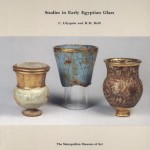
Egyptologically Speaking: Dr. Christine Lilyquist
Following a PhD at New York University where she specialised in the art history and archaeology of Egypt and the Near East, Christine Lilyquist spent 38 years of her career as an Egyptologist with the Metropolitan Museum of New York. [more…]
Edition - November, 2013
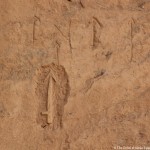
Egyptologically Speaking: Dr Maria Nilsson on Gebel el Silsila
In the beginning: I discovered Gebel el Silsila by accident one could say. Back in 2007, when still a doctoral student, I visited Egypt to study relief scenes depicting Queen Arsinoë II. At the time the convoy system was still in use for those who wished to travel by car. Visitors were permitted just an hour in each temple before being rushed off to the next. So John (Dr. John Ward) and I travelled from Aswan to Edfu in a felucca instead, which allowed us the time we required in each temple. As we sailed up the Nile our captain informed us that a Pharaonic site was coming up and asked us if we wished to stop there to have a look. My first thought was that stopping there would mean a delay in an already tight schedule. But then again who was I to say “no” to a site embedded in the most gorgeous setting with cenotaphs and stelae casting their reflections on the Nile? Of course we agreed to go ashore! [more…]
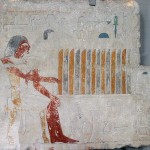
An Exploration of the term ‘inw’ from the Early Dynastic Period to the New Kingdom
The term inw has been described as ‘vexatious’ in its complexity, touching as it does on a range of intricate subjects outside the scope of this article. The following article does not claim to cover all aspects of inw. A reading list for those who wish to explore the subject in more detail, is provided at the end. [more…]
In his book ‘The Official Gift in Ancient Egypt’ (1996) Edward Bleiberg notes that there are thirty eight different interpretations for the term ‘inw’ in English, French and German. As Bleiberg notes ‘The Egyptians could not have been as vague as the numerous translations suggest’ [more…]
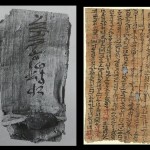
Revisiting Heqanakht
Heqanakht’s ‘letters’ consist of a number of related papyri which have been dated to the early part of the Twelfth Dynasty (2025-1700 BC). The papyri deal with the day-to-day concerns of a well-to-do, land owning farmer who lived near Thebes and who carried out his professional duties as a kA-priest near Memphis. The letters and accounts which make up the papyri were found unopened and, apparently unread, ‘in the condition of their original shipping’ (Goedicke, 1984, p.5). In two instances, the letters still bore their original clay seals [more…]
The Papyri of Heqanakht and the Emergence of a Middle Class in Middle Kingdom Egypt
By Barbara O’Neill. Published in Egyptological Journal Articles, Journal Edition 5. August 14th 2012 Introduction: An Individual Life The following article will focus on the life and times of an Egyptian farmer through an exploration of his letters and accounts. Heqanakht’s papyri offer a rare glimpse into the life of a minor official during the […] [more…]
Egyptologically Speaking ~ Dr. Carolyn Graves-Brown, on her work as curator of The Egypt Centre, University of Swansea, UK
The Egypt Centre at Swansea is quite unusual in the museum world in that we have a large percentage (almost a quarter) of our artefacts on display. By comparison, larger museums may only have between 2 and 4% of their collection on display. This is partly because we want to show as much as possible and partly because our display area can be environmentally controlled while the stores cannot. The funding for the new museum in the 1990s was for the display area and not for storage and hence the storage is not as good as we might like. The display area is thus partly ‘open storage’. I decide how the collection is displayed and what is displayed. Of course I do have bosses (curators are often low down in institutional hierarchies), but I am lucky in that I am allowed a lot of freedom. [more…]
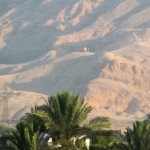
Anatomy of a Dig: Getting up Close and Personal in Thebes
Before I begin this article recounting my experiences on an Egyptian excavation, I have to point out that protocol dictates that I cannot be specific about the project I worked on. That is only right and proper. When the majority of Egypt’s archaeological record remains unreported and unpublished it would be wrong of me, a novice in the business, to give details of the mission before dig leaders have had an opportunity to report officially to the SCA (the Supreme Council of Antiquities, the body which oversees all archaeological activity within Egypt). Therefore, this account will of necessity lack specific detail, although I hope that the following will provide a reasonable overview of an ‘awesome’ experience (in the true sense of this word); one which will remain with me forever. [more…]

The Mortuary Temple of Nebpehtyre Ahmose at Abydos
By Barbara O’Neill. Published on Egyptological, In Brief, August 14th 2012 Introduction: An Overview of the Mortuary Temple In the Old and Middle Kingdoms, pyramid complexes incorporated a mortuary chapel where cult to sustain the deceased king could be maintained. By the Eighteenth Dynasty however, the royal-mortuary temple had evolved from an integrated part of the […] [more…]
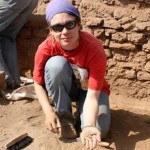
Egyptologically Speaking ~ An Interview with Dr. Nadine Moeller
Tracking Dr Nadine Moeller’s professional path in Egyptology takes one into the rarefied atmosphere of some of the best Ancient History Departments in the world. Moeller’s career has taken her from the University of Heidelberg, in her native Germany, to the University of Cambridge where she earned her PhD in Egyptology and Archaeology, and where her interest in Tell Edfu began. From Cambridge, Moeller held the Lady Wallis Budge Junior Research fellowship at the University of Oxford where she was also granted the Tell Edfu concession, initiating the most recent phase of excavation at this ancient provincial town (located midway between modern Luxor and Aswan in Upper Egypt). [more…]
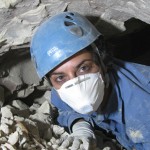
Egyptologically Speaking: An Interview with Professor Salima Ikram
I have long been an admirer of Salima Ikram, even though as a modern (sentimental) pet lover, I struggle with the insights she provides into the sometimes gruesome details of animal cults in ancient Egypt. Anyone who has watched Professor Ikram’s many television appearances; heard her speak on animal mummification or read any of her many publications, cannot fail to be impressed at both her erudition and her easily accessible style of communication as she sets out her no-nonsense, non-sentimental account of the complex relationship between ancient Egyptians and the wide range of animals they worshipped, hunted, ate or preserved for eternity. [more…]
 By
By